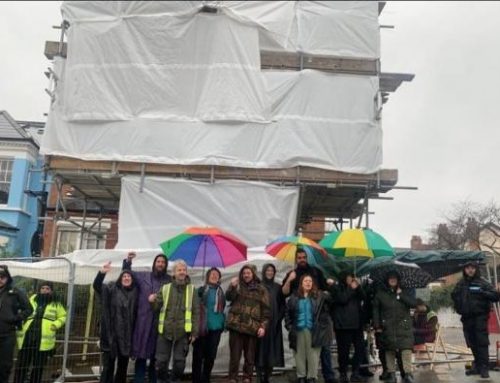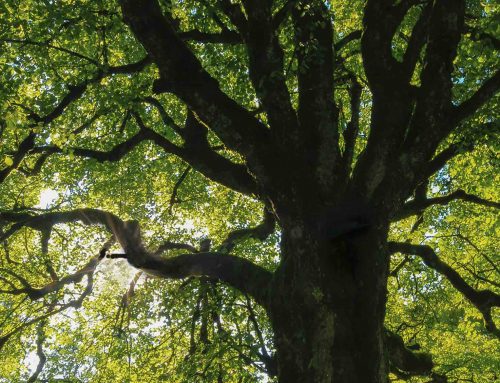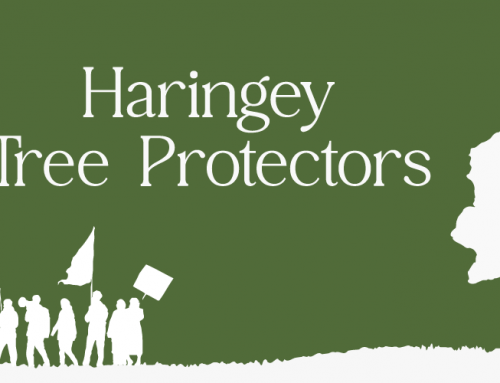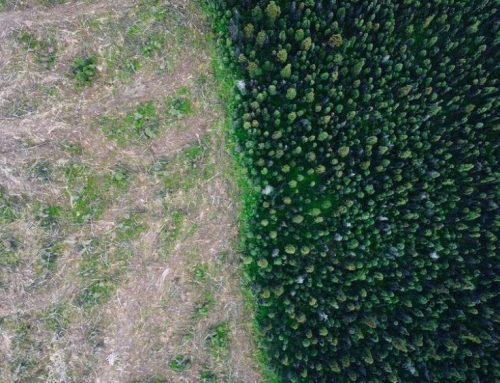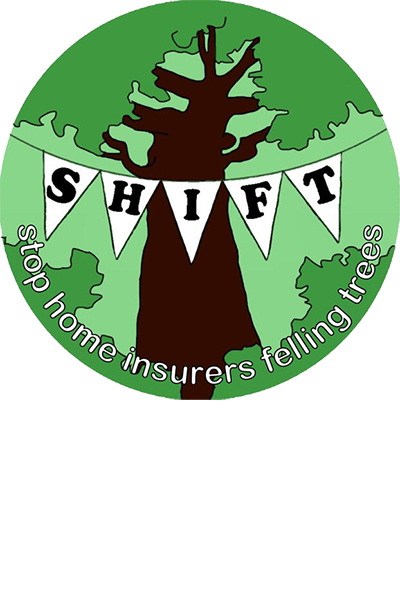I’m sometimes asked, “What’s the best way to save trees”? The answer depends on your particular local circumstances.
Use time efficiently
Before you start any activity, it’s important to think about how much effort you are going to be able to put in and how likely you are to be successful. Activities where you have to put in lots of time and work but with little chance of success are best avoided. Focus instead on those things where you not only have a good chance of success, but you have the resources you need.
Understand the legal implications
Where there is an established legal precedent in common law or the tree is being felled in pursuit of Statute or Act of Parliament, the chances of success are, regrettably, negligible. This is obviously true for trees felled as part of an approved infrastructure project such as HS2 where the project has been approved by Parliament. Think very hard before working to overturn something where the law is against you, including cases where home insurers want to fell trees. Even if you are successful, you will be forcing your local council to fork out more, damaging any relationship you may have with the council.
The importance of private gardens
Although we like to think that greedy developers are the main culprits behind felled trees, selfish private tree owners felling trees in their back gardens cause more damage. Many, but not all, developers, particularly in conservation areas (CAs), are sensitive to the issues and may design development around trees. Not so for individual residents who want a kitchen extension, less shade in their garden or hate clearing up leaves in the Autumn.
At the very local neighbourly level, you might well be able to persuade your neighbour not to fell a troublesome tree. Trees in many local gardens were planted soon after homes were built many decades ago and are often outgrowing the site. Pollarding, crown reduction or crown lift are preferable solutions. If a tree needs to be felled to provide room for an outbuilding or extension, maybe you can persuade your neighbour to change the design or to plant mature saplings as replacements.
Using Tree Preservation Orders
Council approval is needed to work both on trees with Tree Preservation Orders (TPOs) and any mature private tree in a CA. If you can get your local CA extended or get a new one created, you will probably be saving more than one tree. Getting a TPO in place is a lot easier than getting a CA in place, and a lot will depend upon your local council. In a nutshell, you need a local council which not only puts relative priority into saving trees, but also has the resources (tree officers) to do so. I’ll come back to that in a moment. For example, some local councils will routinely block requests in CAs to fell garden trees, whereas others seem to be indifferent.
Monitor Planning Applications
Of course, not all developers (including your local council developing its own sites) have much regard for trees and it is important to monitor new planning applications in your area. If you then find trees at risk you can object, get your neighbours and local community to do so as well and even set up a petition. Councils do listen and take note of such campaigns and there are examples of success, such as the Rookfield Estate tree.
Lobbying
An important matter to consider is the choice of local official and politician to lobby and try to influence. Although you may be dealing with matters pertaining to trees, power and influence over decision making may not lie within the Tree Department. Before you start your campaign, try to prepare some sort of decision-making and relationship map. Which are the council departments that will make the decision? Who are the key political decision-makers? Who are the influencers? Often the local officials you may be dealing with, or the local politicians who lend you a sympathetic ear, may have little influence over the decision.
Lobbying in Haringey
Councils in affluent, verdant areas, where residents want to preserve the local environment, are likely to be more hostile to development and more sympathetic to saving trees, than those in urban areas with serious social and economic problems. Haringey covers an affluent Western end and a deprived Eastern end. The East votes solidly for Labour and the West doesn’t. There are a lot more votes to be gained in the East and Labour has had an overwhelming majority in Haringey for more than 50 years. There is no realistic threat to the current Labour majority, and so the Council can afford to ignore the interests of the Western end of the Borough with impunity. And this is what happens in practice.
The overwhelming majority of trees and green spaces in Haringey is to be found in the West of the Borough. Calls to devote more resource to looking after these areas seem to be resisted by the Eastern majority. You see this not only in the personnel gaps in the Tree Department, but in the decades of neglect in Queens Wood, Coldfall Wood and Parkland Walk. The felling of trees on the edge of the woods caused by insurance claims reflects this neglect, as did the Parkland Walk “tree massacre”. Some like to blame the council officials involved, but it’s more about time and resources than about individual actions.
Given the underlying political economy of Haringey, it’s always going to be a challenge to save trees in the West on public land. This said, there are ways to influence the Council, either as an individual or through various organisations.
First, the council does like to be seen working with and having the support of various local residents’ groups and your lobbying will be amplified if you work through such groups, including the various Friends Groups such as Friends of Queens Wood. Second, if you develop positive relationships with key council officials, you will have an opportunity to influence their thinking. Third, you can try to work through local political channels, which in Haringey means the Labour Party. Fourth, if there is a significant and egregious local issue, you can appeal to the Department of the Environment to intervene. Finally, if you can raise the money, judicial review is a possibility if you think the decision process has been flawed (rather than because you don’t like the outcome). I’m sceptical about the extent to which lobbying MPs or organisations outside of Haringey (such as the London Mayor or our MP) has any impact at all on the Council, though you’ll probably receive a nice letter of support.
As well as lobbying over single tree issues, it’s also important to try to influence council policy. For example, a council has freedom to approve or reject TPO requests or to approve or reject work on trees in private gardens in CAs. You could lobby for a more liberal approach to the former and a more restrictive approach to the latter. Another area where policy changes would make a difference is within the approval process for new developments, where, in theory, tree officers could be given more power and influence. And within Highways and Engineering, more stringent requirements to protect trees could be introduced.
Jonathan Popper, Tree Officer, October 2022


